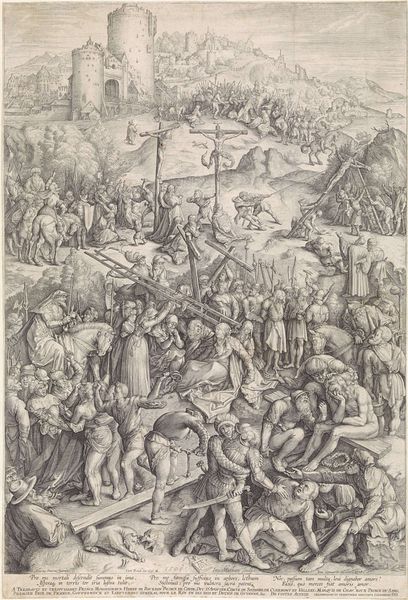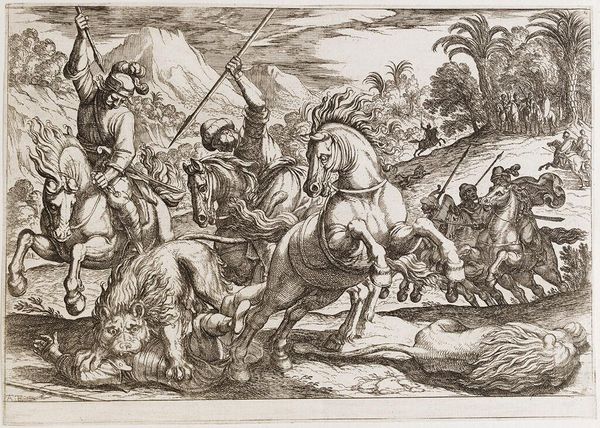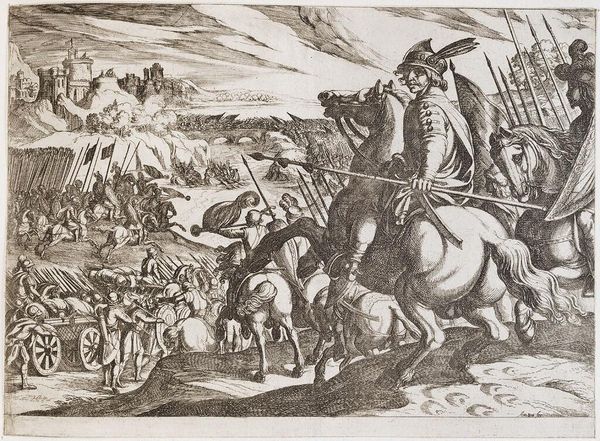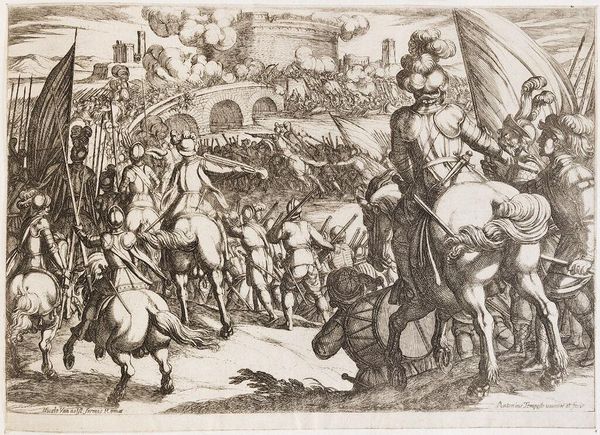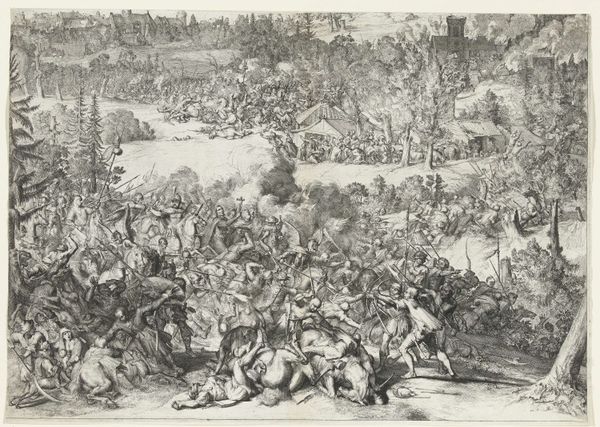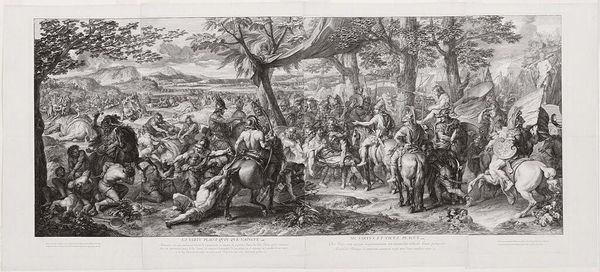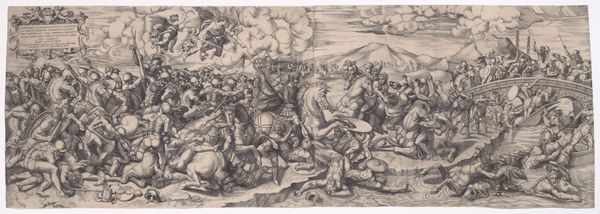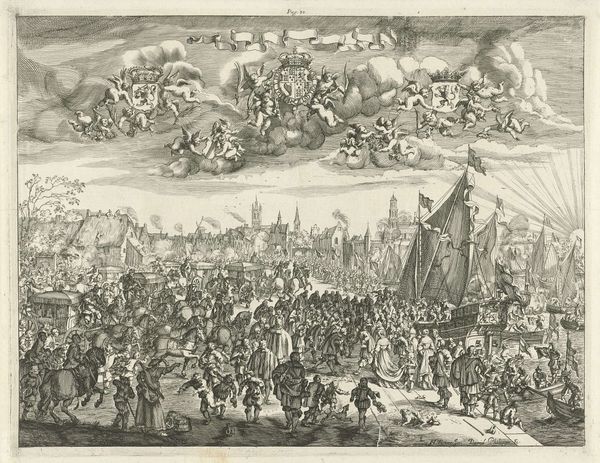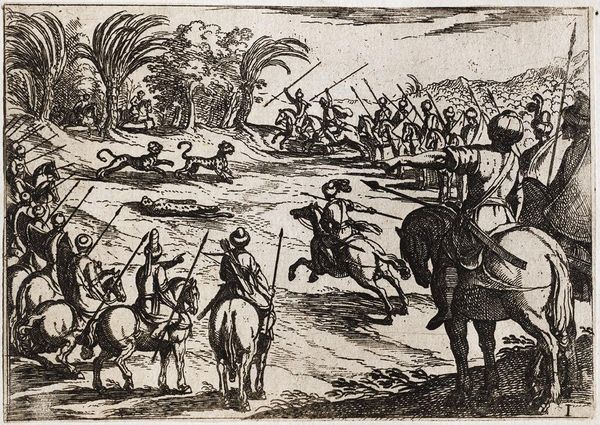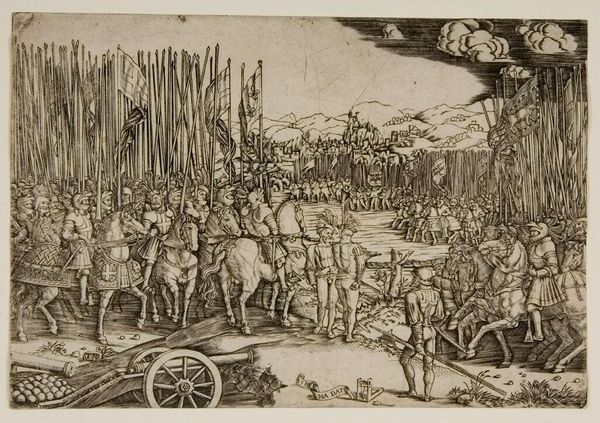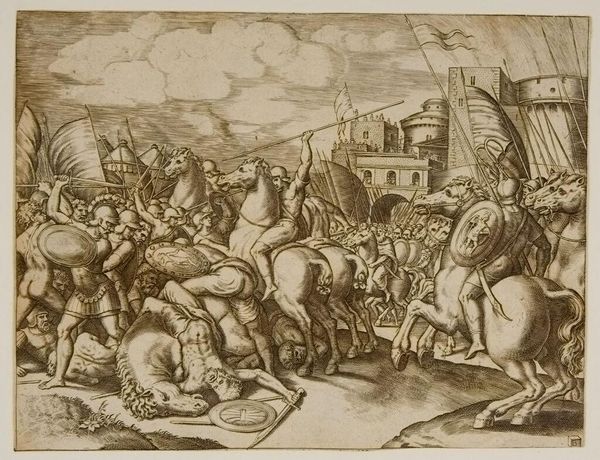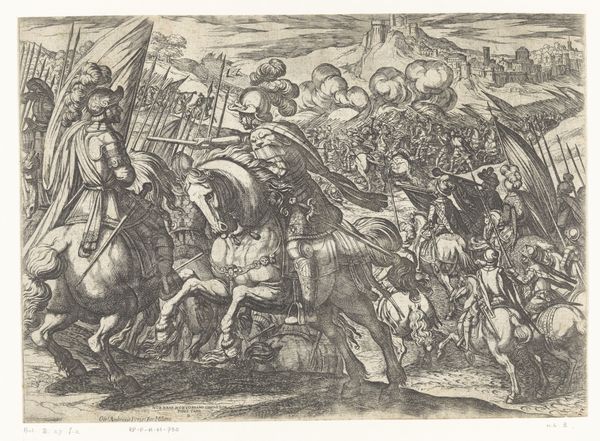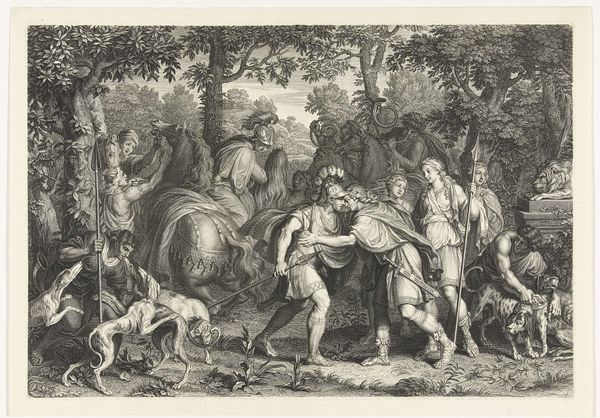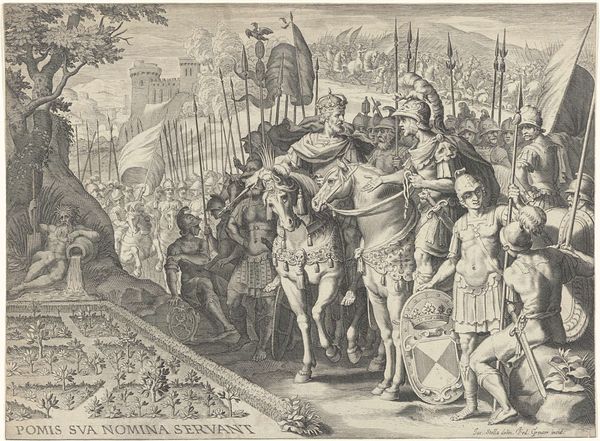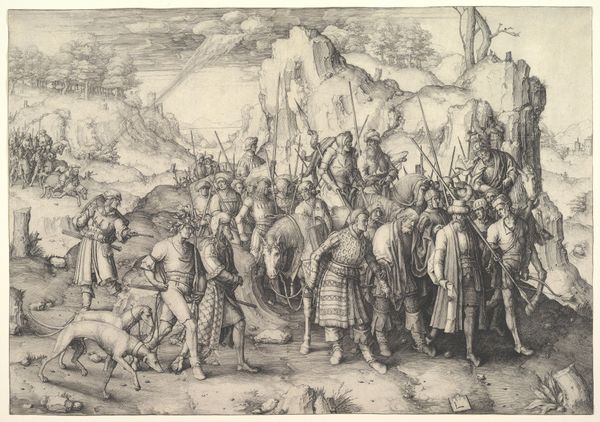
painting, oil-paint
#
figurative
#
baroque
#
painting
#
oil-paint
#
landscape
#
figuration
#
oil painting
#
history-painting
Copyright: Public Domain: Artvee
Curator: The scale here is astonishing. Even through the oil on canvas, the overwhelming atmosphere of military campaign just pours from this piece. Editor: Indeed. What you're responding to is Rubens' "Henry IV of France at the Siege of Amiens in 1597," created around 1630. Rubens captures a pivotal historical moment through a dramatic and imposing composition. We see both King Henry, amidst his military operations, and also gain a sweeping perspective of the city, its siege laid bare. Curator: Rubens wasn't simply creating an historical record, was he? It feels so embedded in the rhetoric of power, painting King Henry almost as a conquering hero. Are we really meant to uncritically celebrate military power? This piece was completed decades after the depicted event, at a time of different sensibilities about gender, nation, and war. How do those later attitudes impact the image's legacy? Editor: Well, Rubens's role as a court painter is undeniably at play here. The painting served a propagandistic function. The emphasis on Henry’s leadership was crucial for the monarchy's self-representation. These representations were vital tools used to shore up support and legitimize royal power, especially given the continuous political turbulence of the period. Think about how court painters like Rubens navigated complex power dynamics. Curator: Power, yes, and spectacle! Consider the viewer forced to stand at eye level with mounted troops, the king literally looking down upon them. Then juxtapose that controlled scene with the city view, spread across a landscape being torn apart by conflict. There is that stark juxtaposition. Where can dignity be found in such moments of crisis, especially when certain people had no chance but to stand on the sides while all their lives are destroyed? Editor: That very tension underscores a core debate around history painting: Can historical moments of trauma truly be aestheticized, and what ethical responsibility do artists bear when portraying subjects marked by inherent power imbalances? Curator: It leaves you wondering what perspectives are ignored, who has been actively left out of the narrative. Editor: It absolutely forces us to confront uncomfortable truths embedded in the stories we choose to tell.
Comments
No comments
Be the first to comment and join the conversation on the ultimate creative platform.
